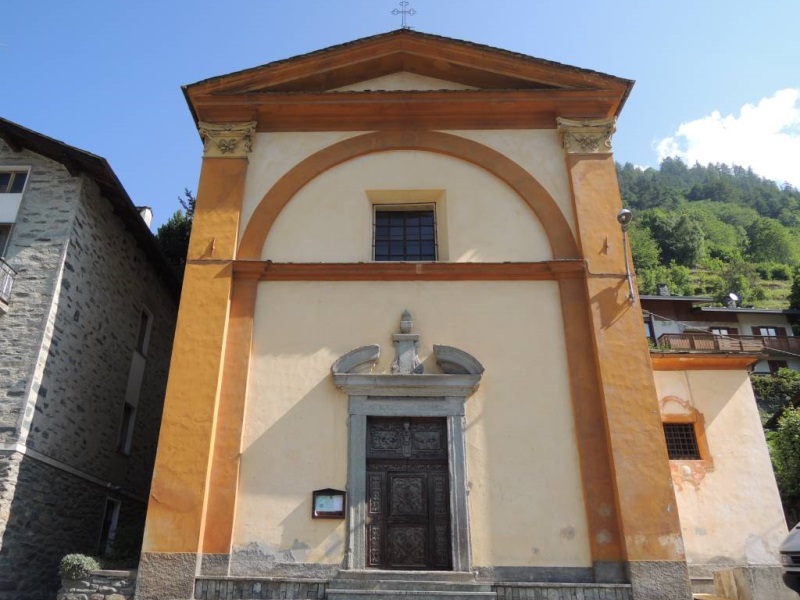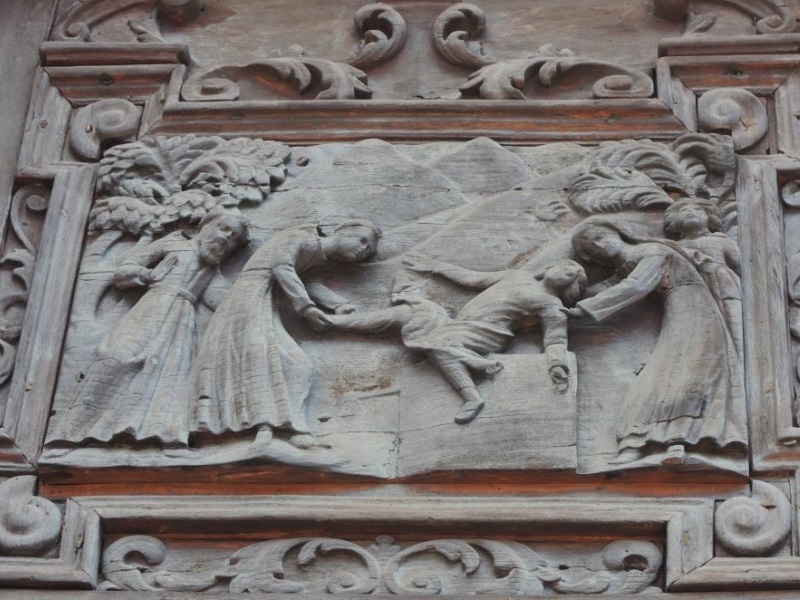di Saveria Masa
The entire district of Vassalini had always been the most densely populated in the municipality of Chiesa (which, until the eighteenth century was called “Quadra di Chiesa”).
Its demographic and economic strength combined to encourage its inhabitants to cultivate their "independence" from the muncipality of Chiesa with their own proposals.
This strong need for autonomy resulted in two significant moments in the political, social and religious life of the district during the seventeenth century.
This was the construction of its own church, even though it remained subject to the parish of Saints Giacomo and Filippo of Chiesa, and the establishment of a separate administration.
The church of Sant’Antonio was founded in 1667 thanks to the men of Vassalini who, until then, had had to go to nearby Chiesa for their religious needs.
They chose to name the building after St. Antonio, as the entire town was particularly devoted to this saint.
The church is also dedicated to St. Stefano, who is celebrated om 26 December.
The story is told that, during the 10.30 a.m. sung mass on St. Stephen's day on days when the weather is fine, a ray of sunshine descends to illuminate the picture of St. Antonio above the church altar.
 Church of St. Antonio. Façade.
Church of St. Antonio. Façade.
The church was built thanks to three main benefactors: the curate of Montagna in Valtellina, Giovanni Antonio Taffino,
the notary, Giovanni Giacomo Vescovo, originally from Vassalini but living in Montagna and Mr Giacomo Moizi.
It was consecrated the following year, in 1668, by the curate of Montagna, Taffino, appointed by the bishop of Como, Ambrogio Torriani.
The building was designed by the master mason from Ticino, Martino Adamo and at least the church walls were constructed between 1667 and 1668.
The church has a simple, elegant façade bordered by two pilasters with stucco capitals to support the cornice of the tympanum.
The beautiful portal was constructed by Francesco Solaro in 1704, whereas the door was engraved in 1705 by the engraver, Bartolomeo Fanoni known as Sasso, who was originally from Primolo.
The work has suffered a great deal due to continual exposure to the weather.
At the top, two caissons show scenes from the life of St. Antonio: on the left is the episode in which St. Antonio reattaches the leg of a young man who had cut it off out of remorse for having kicked his mother.
On the right is St. Antonio preaching to Ezzelino da Romano.
 Church of St. Antonio. Detail of the main door.
Church of St. Antonio. Detail of the main door.
The master masons, Paolo Adamo and Domenico Aprile were the authors of the precious stuccos inside, which ornate the vault of the nave
(1673) and of the presbytery, as well as the high altar, made of gypsum and brickwork (1678-79).
The ribbed vault is decorated with stuccos which frame 5 frescoed medallions: the central one depicts Our Lady of the Assumption,
the one above the entrance shows St. Antonio talking to the fish, the third towards the altar is St. Antonio preaching, and the two side medallions show Angels in flight.
Although these frescoes can be dated back to the 18th century, they have as yet to be attributed to an artist.
A canvas depicting the Annunciation (18th century) hangs on the counter-façade, together with two others with the busts of two Apostles.
Canvases (1714-16) with the other Apostles, Christ the Redeemer and the Virgin Mary are arranged on the walls.
On the right-hand wall stand a confessional and the pulpit beneath a richly decorated, wooden canopy, masterfully engraved by Andrea Rinaldi of Chiuro (1778).
Above the canopy stands a wooden statue of St. Antonio, by the same artist.
The altar piece depicting St. Antonio kneeling with Baby Jesus and some little angels is the work of the artist, Bartolomeo Gualtieri of Sondrio, as are the paintings in the chancel.
The painted and gilded wooden tabernacle in the shape of a little temple was made by the engraver, Bartolomeo Fanoni in 1722.
We also owe the boxes for the relics and two little cupboards in which to place the latter to the same artist.
Closed with wrought iron gratings, they are placed high up along the sides of the presbytery 1709).
The church vestry houses a wooden statue of the Madonna Lactans on the throne, dating back
to the end of the fifteenth century, early sixteenth century.
The statue is transformed into Madonna del Carmine by adding a scapular and cloak and is exhibited in the month of May.
The work comes from the church of the Saints Giacomo and Filippo in Chiesa, from where it was adorned with various garlands and transferred in 1877 in a solemn procession.